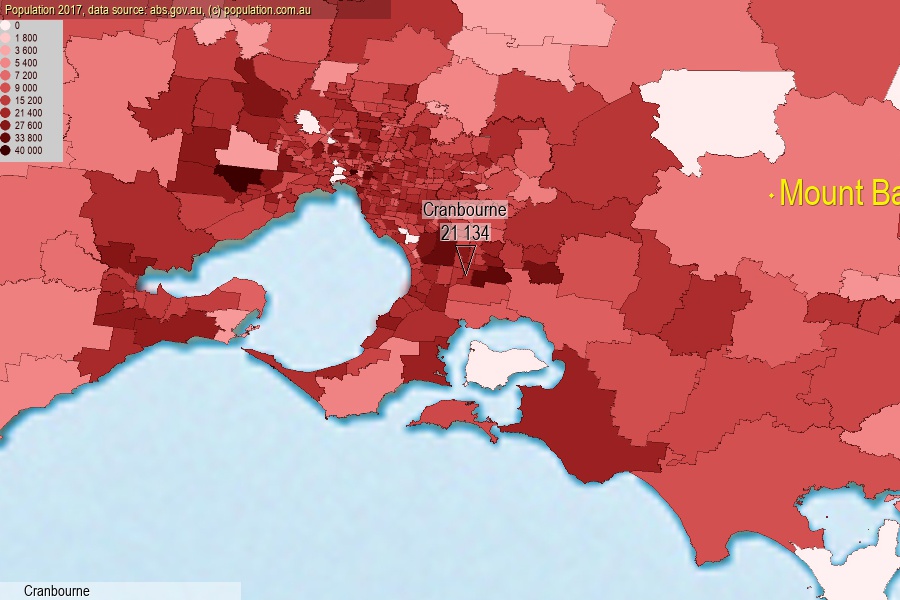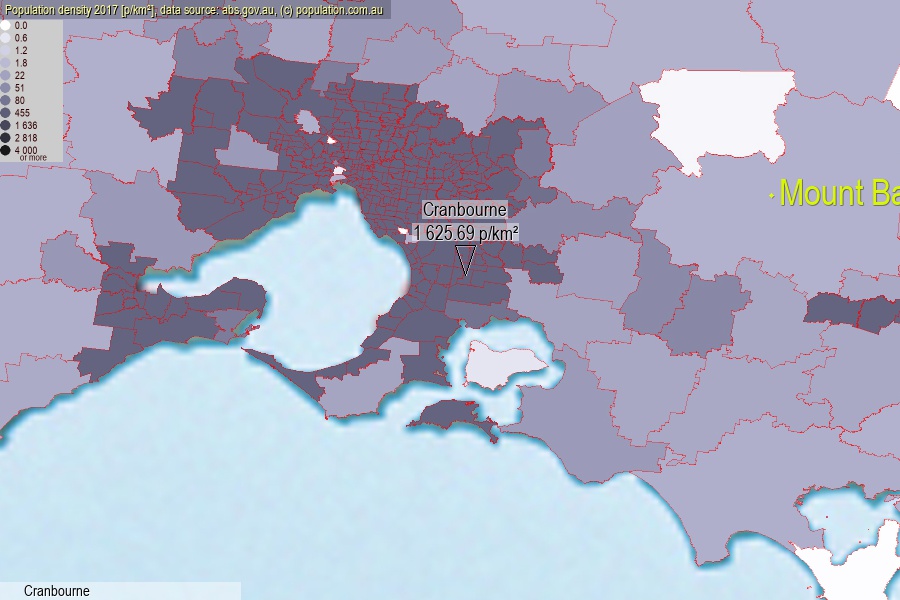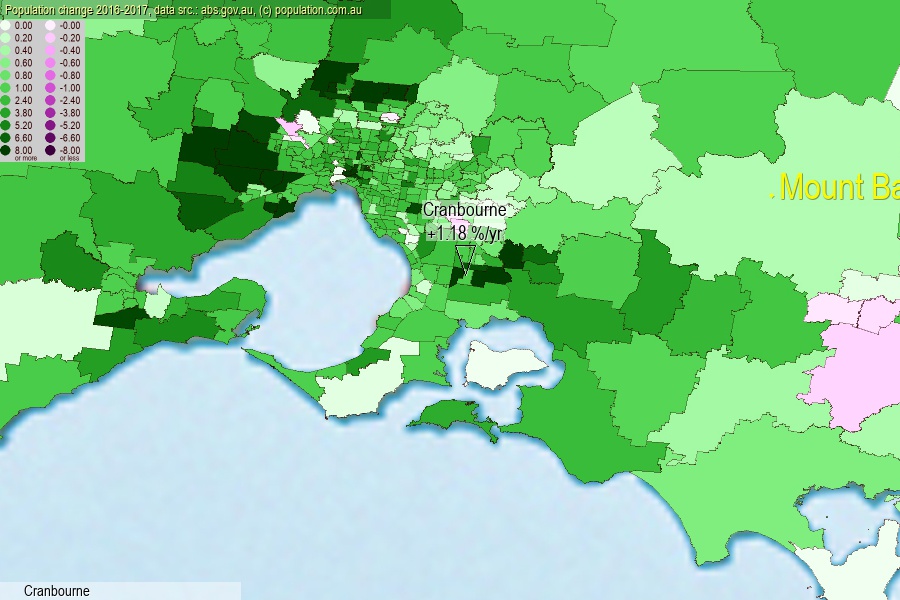 population.com.au
population.com.auLast official estimated population of Cranbourne (as Statistical Area Level 2) was 21 134 people (on 2017-06-30)[2]. This was 0.09% of total Australian population and 0.329% of VIC population. Area of Cranbourne is 13.00 km², in this year population density was 1 625.69 p/km² . If population growth rate would be same as in period 2016-2017 (+1.18%/yr), Cranbourne population in 2025 would be 23 209. [0]



Click to enlarge. Cranbourne is located in the center of the images.
Population [people], population density [p./km²] and population change [%/year] [2]
View borders » (new window) [4]
[1991-1992] +1.38 %/Yr.
[1992-1993] -0.35 %/Yr.
[1993-1994] -1.75 %/Yr.
[1994-1995] -1.12 %/Yr.
[1995-1996] +0.17 %/Yr.
[1996-1997] -2.45 %/Yr.
[1997-1998] -2.34 %/Yr.
[1998-1999] -0.29 %/Yr.
[1999-2000] -0.66 %/Yr.
[2000-2001] -0.49 %/Yr.
[2001-2002] +0.66 %/Yr.
[2002-2003] +2.12 %/Yr.
[2003-2004] +3.75 %/Yr.
[2004-2005] +2.68 %/Yr.
[2005-2006] +2.77 %/Yr.
[2006-2007] +5.59 %/Yr.
[2007-2008] +7.20 %/Yr.
[2008-2009] +5.61 %/Yr.
[2009-2010] +4.68 %/Yr.
[2010-2011] +1.64 %/Yr.
[2011-2012] +1.78 %/Yr.
[2012-2013] +2.13 %/Yr.
[2013-2014] +1.63 %/Yr.
[2014-2015] +1.57 %/Yr.
[2015-2016] +1.56 %/Yr.
[2016-2017] +1.18 %/Yr.
[0] Calculated with linear interpolation from officially estimated population
[1] Read more about SA2 and Australian Statistical Geography Standard (ASGS) on abs.gov.au
[2] Population data from Australian Bureau of Statistics (Population and density: 2017; change: 2016-2017)
[3] Digital Boundaries: Australian Statistical Geography Standard (ASGS) 2016.
[4] Border coordinates are simplifyed using Ramer-Douglas-Peucker algorithm.